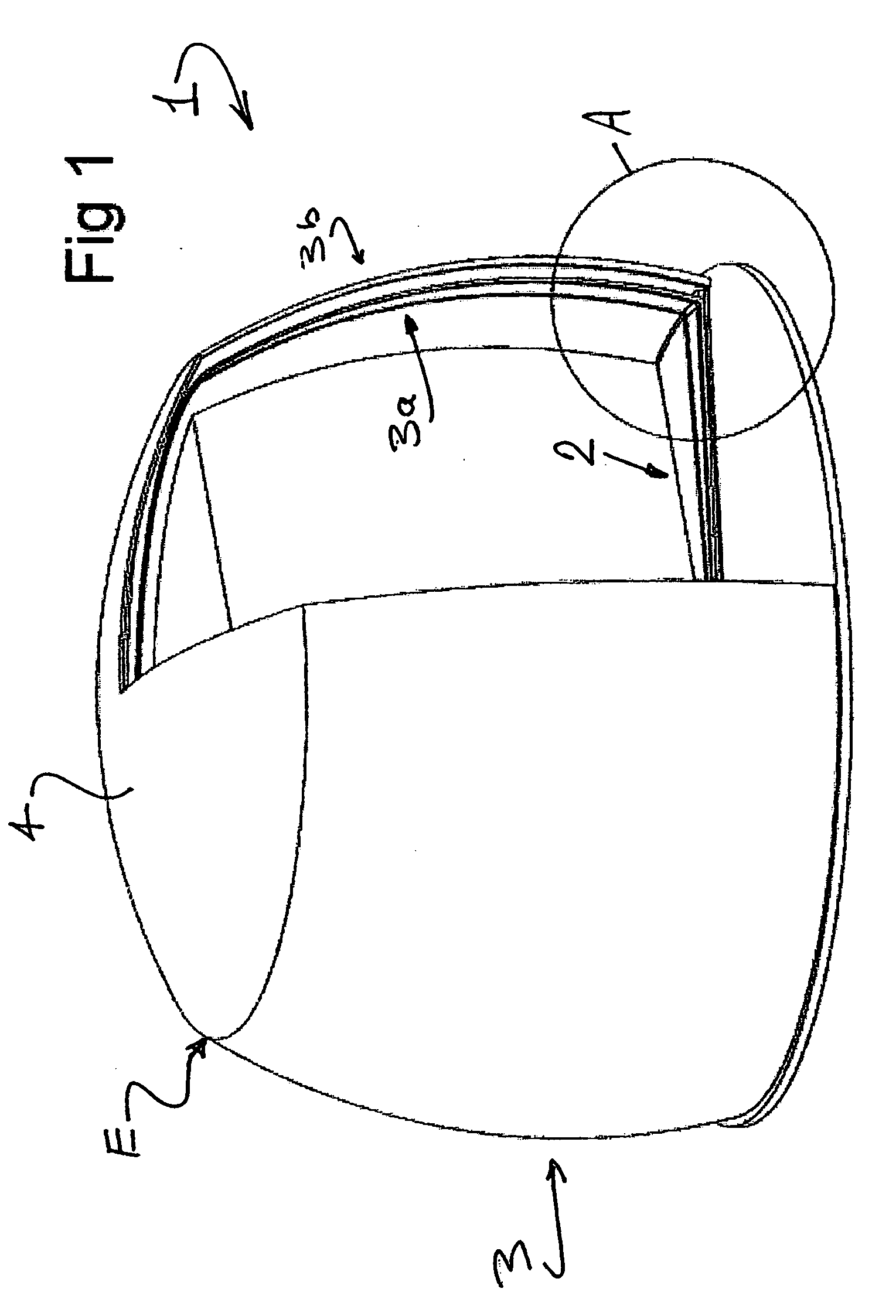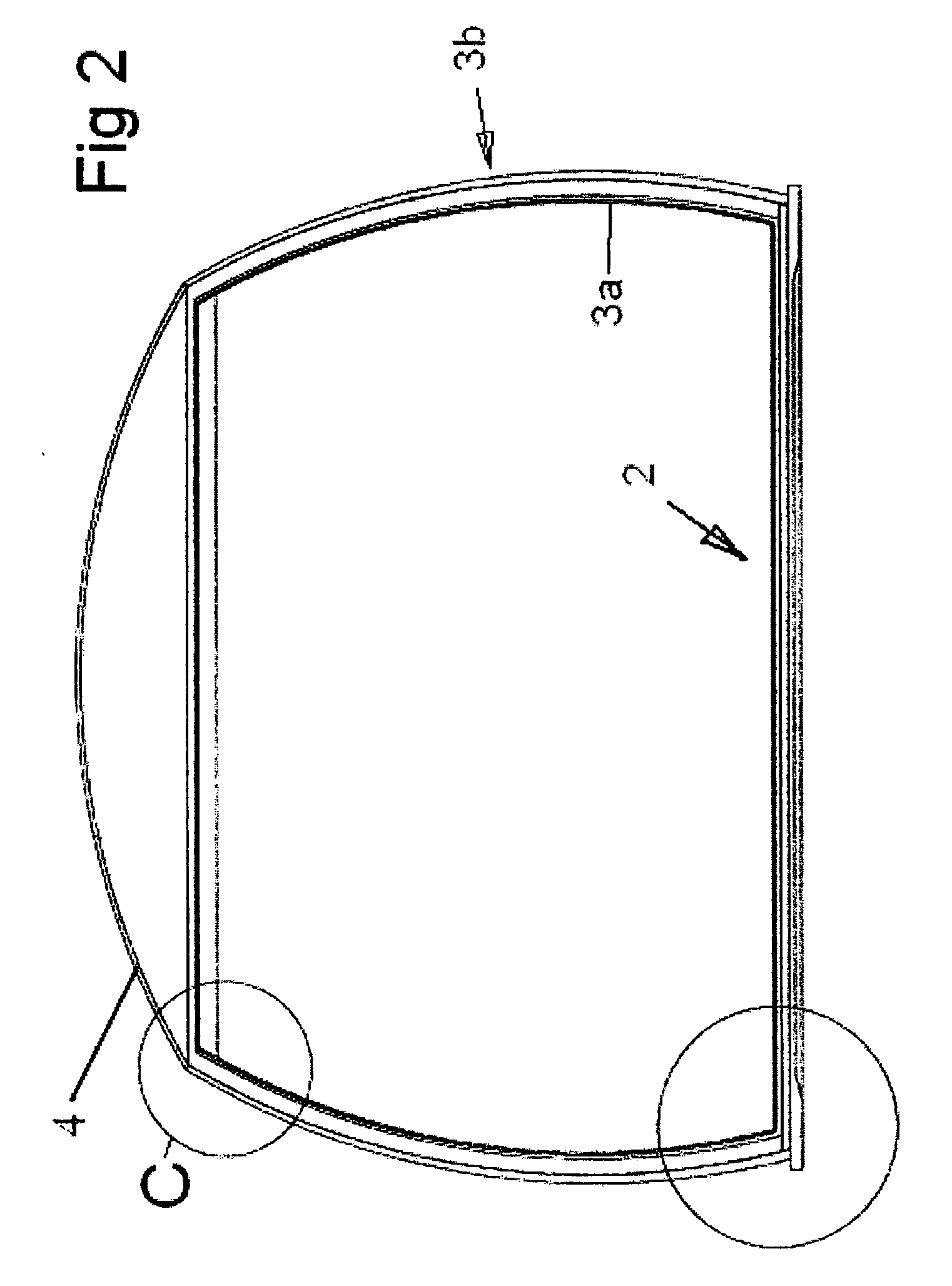Cryogenic liquid storage tank
- Summary
- Abstract
- Description
- Claims
- Application Information
AI Technical Summary
Benefits of technology
Problems solved by technology
Method used
Image
Examples
Embodiment Construction
[0065]Referring now to the drawings, FIGS. 1 to 3 illustrate an embodiment of a storage tank 1 according to the present invention. The storage tank 1 comprises an inner tank part and an outer tank part here called inner and outer leaves 3a and 3b. The tank wall 3 is formed on a circular base 2. A dome 4 closes the top of the tank 1.
[0066]As can be clearly seen from FIGS. 1 and 2, the sidewall 3 of the tank is generally circular in plan shape, but differs in an embodiment of the invention from the conventional tank in that the sidewall is not straight in vertical section, but it is curved so as to present a convex face to the outside of the tank. At the lower edge of the sidewall, the sidewall is inclined outwardly from the base. The sidewall 3 curves inwardly from the base to its upper edge, resulting in an outwardly convex shape to the tank.
[0067]In the illustrated embodiment, the base 2 comprises a firm footing, of for example concrete, in the form of a baseplate 5. The outer leaf...
PUM
| Property | Measurement | Unit |
|---|---|---|
| Metallic bond | aaaaa | aaaaa |
| Contraction enthalpy | aaaaa | aaaaa |
| Stress optical coefficient | aaaaa | aaaaa |
Abstract
Description
Claims
Application Information
 Login to View More
Login to View More - R&D
- Intellectual Property
- Life Sciences
- Materials
- Tech Scout
- Unparalleled Data Quality
- Higher Quality Content
- 60% Fewer Hallucinations
Browse by: Latest US Patents, China's latest patents, Technical Efficacy Thesaurus, Application Domain, Technology Topic, Popular Technical Reports.
© 2025 PatSnap. All rights reserved.Legal|Privacy policy|Modern Slavery Act Transparency Statement|Sitemap|About US| Contact US: help@patsnap.com



